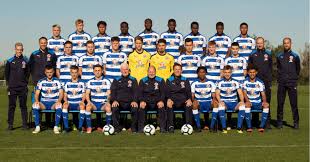Promoting reading within this age group comes with unique hurdles but also offers significant opportunities. This section explores these challenges and suggests ways to leverage opportunities to cultivate a vibrant reading culture among young people 789BET.
Challenges and Opportunities in Promoting Reading U18
One of the biggest challenges is the declining trend of traditional book reading, especially print books, amid the rise of screens and instant entertainment. Young people are often drawn to videos, gaming, and social media, which compete with reading for their attention thể thao 789BET.
This decline affects literacy development and diminishes exposure to rich language and complex narratives. To counteract this, educators and parents need to integrate reading into digital landscapes already familiar to youth, using interactive, multimedia content that bridges traditional and modern formats.
Creating engaging, age-appropriate, and culturally relevant materials is essential. Schools can incorporate popular genres, involve students in choosing books, and use technology to make reading more appealing.
Overcoming Socioeconomic Barriers
Socioeconomic disparities pose a significant hurdle, as access to books and reading resources varies widely. Children from low-income families may lack access to libraries, books at home, or digital devices necessary for modern reading.
Efforts should focus on equitable access, such as school-based programs, mobile libraries, and community initiatives. Providing free or subsidized books, digital devices, and internet access can help bridge the gap.
Additionally, training teachers and librarians to recognize and address diverse needs ensures that interventions are inclusive and effective.
Harnessing Technology as an Asset
While technology can distract, it also presents an unprecedented opportunity to innovate literacy promotion. Interactive apps, gamified reading challenges, and virtual book clubs can motivate reluctant readers and sustain interest.
Developers should collaborate with educators to create content that balances fun and educational value. Features such as progress tracking, rewards, and social sharing can foster a sense of achievement and community.
Using data analytics to personalize recommendations and monitor engagement allows for tailored interventions. Schools and libraries can employ digital tools to identify struggling readers early and provide targeted support.
Conclusion
Reading U18 encompasses more than just the act of reading; it reflects a dynamic, evolving landscape shaped by technological advances, cultural shifts, and pedagogical innovations. Engaging young readers involves understanding their preferences, overcoming barriers, and harnessing new media to foster a passionate, lifelong relationship with literature. As we continue to adapt and innovate, supporting the reading journey of U18 will be instrumental in cultivating informed, empathetic, and creative future generations.
